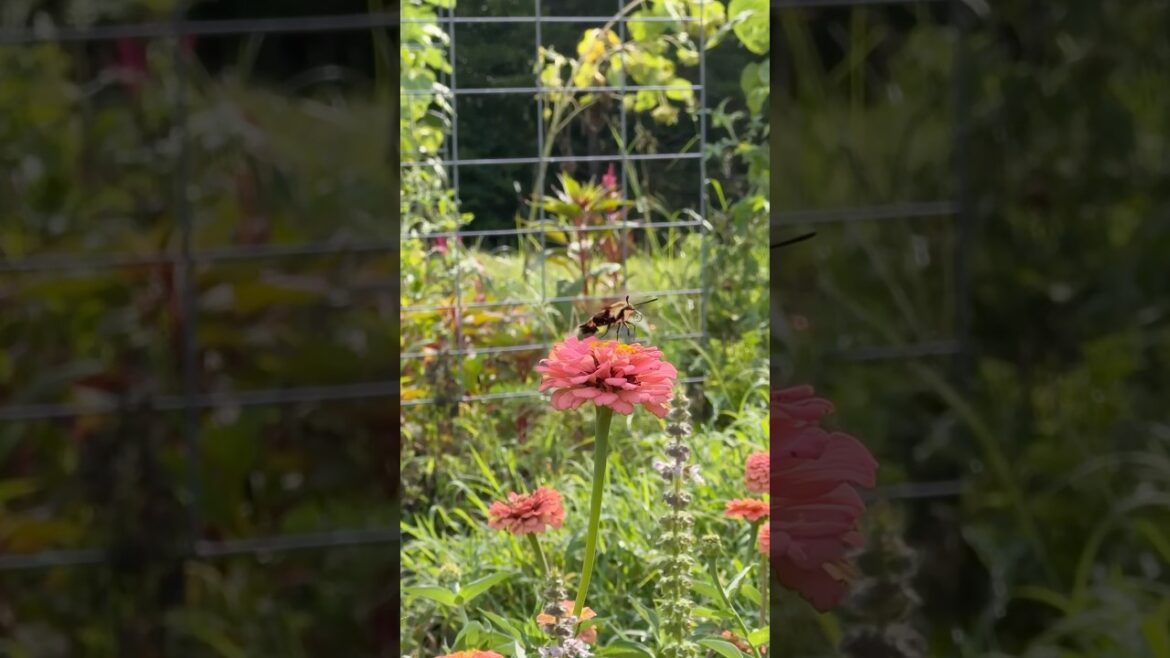what is this insect help me identify it is it a hummingbird? Is it a bumblebee weird cross or is it just an imitator pretend to be something it isn’t #Gardening #Insect #Bug #Bug #BizarreI think it is actually a hummingbird moth, mimicking that rapid wing flutter! Nature never fails to surprise 🌸🐦💚 #NatureIsWild #GardenLife #hummingbirdmoth
n the world of gardening and nature observation, few experiences rival the thrill of spotting a truly unique creature. When we think of bugs, we often picture insects that creep or crawl rather than ones that soar through the air like a tiny helicopter. But every now and then, nature offers up a delightful surprise. In my garden, among the roses, daffodils, and abundant greenery, I recently encountered an incredible insect—a hummingbird moth—that initially had me convinced I was watching a real hummingbird!
This fascinating insect, which I’ll delve into more deeply here, is part of what makes spending time in the garden so special. Whether you’re an avid gardener or simply a fan of nature’s diversity, understanding creatures like the hummingbird moth can deepen your appreciation of the world around you.
The hummingbird moth is one of nature’s most impressive mimicry artists, closely resembling a hummingbird in its movements, behaviors, and appearance. Hummingbird moths belong to the Sphingidae family, often called hawk or sphinx moths, and can be found in gardens worldwide. The hummingbird moth in North America, often referred to as Hemaris thysbe, is particularly noted for its uncanny resemblance to the real bird.
What makes this moth even more fascinating is its ability to hover in front of flowers as it feeds, using a long proboscis to sip nectar just like a hummingbird. The wings beat so fast they produce a subtle hum, creating a beautiful, ethereal sight as the moth moves from bloom to bloom. Imagine this tiny wonder flitting among your garden flowers, appearing and moving like a miniature hummingbird!
The first step in appreciating the hummingbird moth is knowing how to identify it correctly. With its fuzzy body and transparent wings, the hummingbird moth looks more like a bird than an insect at a glance. Here are some of its key identifying features:
Size and Body Shape: The hummingbird moth is around 1 to 2 inches long, with a plump, fuzzy body that resembles a hummingbird’s.
Transparent Wings: Unlike many other moths, the hummingbird moth has translucent wings with dark edges. The clear parts make it easier to see its rapid wing movements, which further contribute to its hummingbird-like appearance.
Color and Pattern: Hummingbird moths have a mix of tan, olive, and rust-colored markings, helping them blend in with their surroundings. These colors can vary based on their geographic location.
Flight and Feeding: When you see a creature hovering like a hummingbird, moving from flower to flower, and using a long tongue-like proboscis to feed, you’ve likely spotted a hummingbird moth. Their distinctive flight pattern and feeding behavior are dead giveaways.
One of the most intriguing aspects of the hummingbird moth is its mimicry. Mimicry in nature is an adaptive strategy where one species evolves to resemble another. But why does the hummingbird moth mimic a bird? This mimicry is likely an evolutionary advantage. By resembling a hummingbird, which predators tend to avoid, the moth gains a certain level of protection. Additionally, the rapid movement and hum of its wings can deter smaller predators from attacking it.
This mimicry also enables the moth to be highly effective as a pollinator, which brings us to the next fascinating aspect of these creatures.
Pollination is essential for garden health, supporting both wildflowers and edible plants. Hummingbird moths play a surprisingly effective role as pollinators, visiting many of the same flowers that attract hummingbirds. They’re particularly drawn to tubular flowers, like petunias, phlox, and honeysuckle, as well as flowers with deep corollas, where their long proboscis is well-suited to access nectar.
In my own garden, I’ve seen these moths frequent roses, daffodils, and even the blooms around the vegetable beds. Each visit helps to transfer pollen from flower to flower, supporting seed production and encouraging biodiversity.


5 Comments
That is called a hawk moth! That is what a tomato hornworm turns into. Not sure if that is the exact variety that comes from a tomato hornworm but if not, it is from a close relative since there are different varieties. Hope that helps 😁
Saw the exact same in my garden this year as well. My daughter and I did some research and came across hummingbird hawk moth.
Hummingbird moth, hummingbird hawk moth!
As others have said-Hummingbird Moth!
They are the adult stage of the tomato hornworm.
Beautiful flowers, are those zinnias?